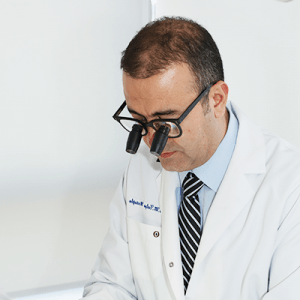You can find the answers to all your questions about dismemberment of limbs and microsurgery on this page!
Emergency line for dismemberment of limbs: +90 (532) 460 02 83
Do not forget that the first 6 hours is critical in limb losses! Watch the short video below to learn how to carry the severed organ!

Microsurgery; is a surgical technique enabling enlargement and repair of tissues and structures such as veins and nerves that cannot be viewed with naked eye in dismemberment of limbs such as loss of thumbs, via microscope or special googles or transfer of limbs to where the limb is missing in another place of the body.
WHICH BRANCHES USE IT?
Many branches such as Orthopedics and Traumatology, Plastic Surgery, Ophthalmy, Brain and Nerve Surgery perform operations using microsurgical methods. It is used to suture the severed limb to its place, to repair them or to obtain the best result in functional and cosmetic terms with free tissue transplants in orthopedics.
WHAT IS THE ADVANTAGE OF USING MICROSURGERY IN ORTHOPEDICS?
As an example, let’s consider the patient who applied with vascular, nerve and bone injuries as a result of finger loss. The intervention of this patient is first performed by the orthopedist for bone repair, then the vascular surgeon, the plastic surgeon intervenes in repairing the nerves and covering the tissues. However, if the orthopedist is also someone with dismemberment of limbs and microsurgery experience, they can apply all these disciplines from a single source and by planning the next steps.
WHAT ARE THE SITUATIONS THAT REQUIRE THE MOST MICROSURGERY IN OUR COUNTRY?
Patients mostly refer to us orthopedists with dismemberment of limbs after work accidents. Finger loss after work accidents is the most common type of case encountered by Orthopedic microsurgeons in Turkey. Normally, it is scientifically clear after which types of injuries the severed fingers can be sutured back into place. However, since we are a slightly eastern society in our country, the range of indications is kept very wide in line with the demands of the patients, and even in the most difficult limb losses and microsurgical cases, replantation surgery is applied instead of replantation. Work accidents, traffic accidents, burns and congenital anomalies are among other reasons that require microsurgery. For the success of the treatment in patients who apply with many different reasons, the type of loss and the conditions under which the severed organ is delivered to the health institution is of great importance.
HOW SHOULD THE PARTS BE STORED AFTER LOSS OF LIMBS?
After the part is cleaned and wrapped with a clean pad, it should be placed in a clean and waterproof bag, then put into a second bag or bucket filled with 1 part water and 2 parts ice in it. The stored limb should never be in direct contact with ice. The patient’s name and surname should be written on the prepared bag/bucket. The severed organ and the patient must be in the same vehicle when going to the health institution.
WHEN CAN THE SEVERED PARTS BE SUTURED IN PLACE?
Limb losses are evaluated in two different groups as complete and partial limb losses. In full limb losses, the relevant limb (for example; finger loss, hand loss and arm loss) is separated from the body. Since blood flow cannot reach the relevant organ in such severances, the severed limb should be sutured urgently (within a maximum of 6 hours). In cases of partial losses, the connection of the organ with the body and blood circulation continues. Therefore, the time to reach the health institution may be longer. However, despite the partial loss, the vascular connection of the organ may be completely disconnected. In such cases, the time to reach the health institution should be evaluated just like a complete severance case. Regardless of the kind of loss, it is important to reach a health institution as soon as possible for the health of the patient.
The waiting period is six hours in organs with excess muscle tissue such as arms and legs, provided that it is transferred and stored in the cold environment under the specified conditions. This time should not be understood as time for reaching the hospital. There is a maximum of six hours for the patient and the severed limb to reach the hospital, operated, and vascular repair to be done and blood to be rejuvenated. This time may be longer in organs containing less muscle tissue in cases of limb losses such as finger losses and microsurgery.
DOES THE FUNCTION OF REPLANTED ORGANS AFTER LOSS OF LIMBS AND MICROSURGERY RETURN TO THE PREVIOUS STATE?
After dismemberment of limbs and microsurgery, if the patient’s replanted organ is not lost after a certain period of time, a long physical therapy process awaits the patient. It is very important for physical therapy applications are carried out by experienced physiotherapists who have been specially trained in this job. Physiotherapy is very important for the success of the treatment. Its duration can take from a few months to years. It may be necessary to perform operations that increase functionality such as various bone lengthening surgeries and tendon transfers in coordination with physical therapy. After all these treatments, loss of limb and microsurgery patients can be cosmetically and functionally satisfied in their daily lives.


